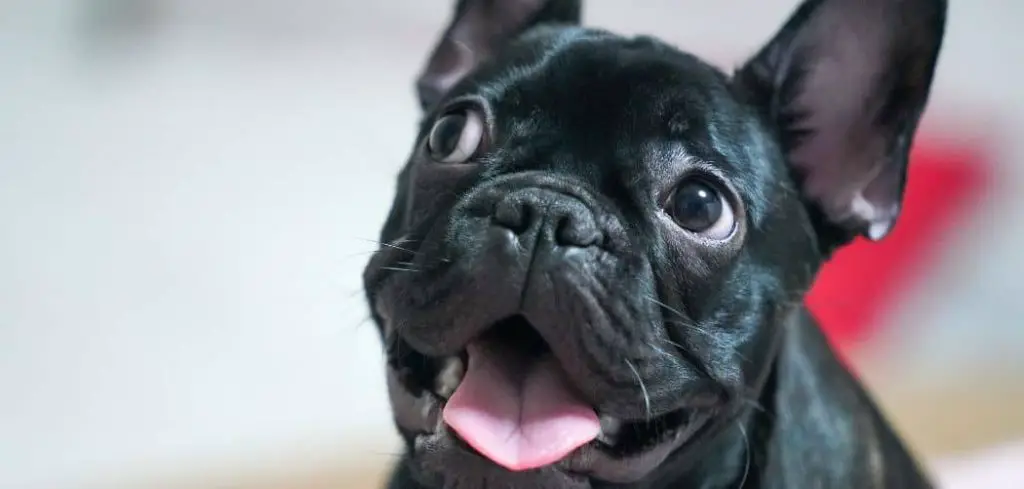When your puppy is drooling and not eating, it can be incredibly worrying—especially for new dog parents.
Puppies are known for their boundless energy and healthy appetites, so when your little one turns away from food and starts salivating excessively, it’s a clear signal that something’s off.
Because puppies are still developing, they’re more vulnerable to dehydration, infection, and gastrointestinal problems.
We outline why your puppy might be drooling and not eating, what you can do at home, and when it’s time to call the vet.
Puppy Drooling and Not Eating: Why It Happens
When your puppy is drooling and not eating, this combination of symptoms in puppies can stem from teething discomfort, gastrointestinal infections, ingestion of foreign objects, nausea, or even serious viruses like parvovirus.
When a puppy is drooling and not eating, it typically means they’re in discomfort—oral pain, nausea, or illness—and need immediate attention.
Puppies are less able to tolerate skipped meals or hydration loss, so prompt action is vital.

Puppy Drooling and Not Eating: Common Causes
Teething Discomfort
One of the most common and least serious reasons for a puppy drooling and not eating is teething.
Between the ages of 3–6 months, puppies lose their baby teeth and grow their adult set, which can cause sore gums, chewing behavior, and drooling.
During this time, they may temporarily lose interest in eating, especially if their food is hard or cold.
Softening kibble with warm water or switching to a wet puppy formula can help. Offer safe teething toys to help soothe their gums.
Gastrointestinal Upset
Puppies are notorious for eating things they shouldn’t—grass, dirt, trash, or even socks.
This can lead to vomiting, nausea, and loss of appetite. Nausea in puppies is often accompanied by lip licking, salivation, and lethargy.
If your puppy is drooling and not eating and also has a tender belly or diarrhea, it’s time to act.
Monitor closely and withhold food for a few hours, but always ensure they have access to fresh water.
If symptoms persist or worsen, consult your vet promptly.
Related: Dog drooling and not eating (Causes and when to worry)
Parvovirus or Other Infections
Unfortunately, puppies are at high risk for infectious diseases, especially if they haven’t completed their full round of vaccinations.
Parvovirus is a particularly dangerous threat, often causing vomiting, diarrhea (sometimes bloody), lethargy, loss of appetite, and drooling due to nausea.
If your puppy is drooling and not eating and has any other signs like lethargy or vomiting, seek veterinary attention immediately.
Parvo is a medical emergency and highly contagious—early treatment is crucial for survival.
Foreign Object in the Mouth or Throat
Puppies explore the world with their mouths, which makes them prone to chewing and swallowing inappropriate items.
A small object stuck in the gums, under the tongue, or in the throat can cause sudden drooling and a refusal to eat.
Watch for gagging, pawing at the face, or attempts to vomit.
Don’t try to remove an object unless it’s clearly visible and easy to reach—seek veterinary help if there’s any doubt.
Oral Injuries or Sores
Rough play, chewing sharp toys, or even early signs of mouth ulcers can cause discomfort in puppies.
If your pup has an oral injury, it may drool due to pain and avoid food even if they’re otherwise acting normal.
Check the inside of your puppy’s mouth for redness, swelling, or visible cuts—but be gentle, as pain can make them reactive.
Avoid feeding them hard treats or bones until the discomfort subsides or a vet examines them.
What to Do if Your Puppy Is Drooling and Not Eating
If your puppy is showing these symptoms, here’s how to help right away:
Offer soft, bland food like plain boiled chicken and rice or puppy-safe wet food.
Inspect their mouth carefully for signs of teething pain, ulcers, or stuck objects.
Encourage hydration by adding low-sodium broth to water or offering ice chips.
Avoid treats, table scraps, or rawhide which may worsen GI issues.
Keep them calm and watch for other signs like vomiting, diarrhea, or weakness.
Puppies can go downhill fast if they’re not eating or staying hydrated, so don’t delay intervention if you see persistent symptoms.
When to Call or Visit Your Vet
Call your vet if:
Your puppy drooling and not eating continues beyond 12–24 hours.
They also vomit, have diarrhea, or appear lethargic or weak.
You see signs of oral trauma, swelling, or bleeding.
Your puppy has not completed their vaccinations and shows GI symptoms.
There’s any suspicion of a foreign object ingestion or toxin exposure.
With puppies, early action can make all the difference between a minor issue and a serious health emergency.
Related: Old dog drooling and not eating (Here’s why it happens)
Key Takeaway
When a puppy is drooling and not eating, it’s a sign that their little body is trying to cope with something uncomfortable—be it teething, a stomach upset, or something more serious.
Because puppies are still growing and fragile, it’s important not to wait too long before getting professional help.
Trust your gut. If your pup seems “off,” take it seriously and reach out to your vet. A timely response could save your puppy from unnecessary suffering—and give you peace of mind.
